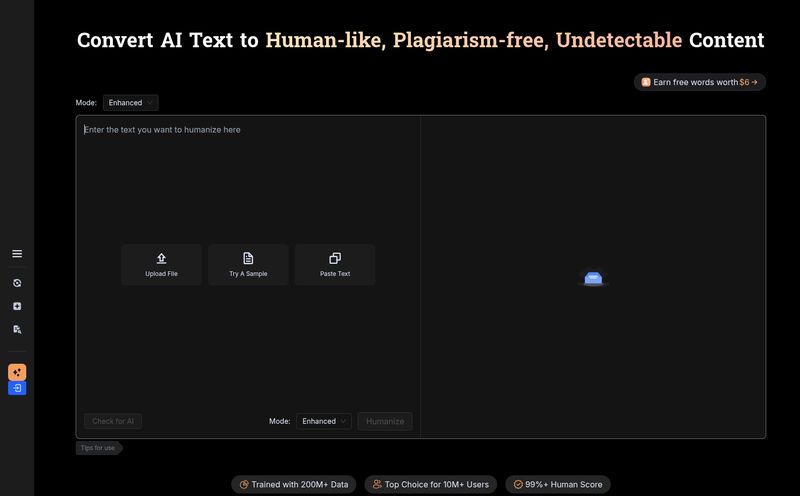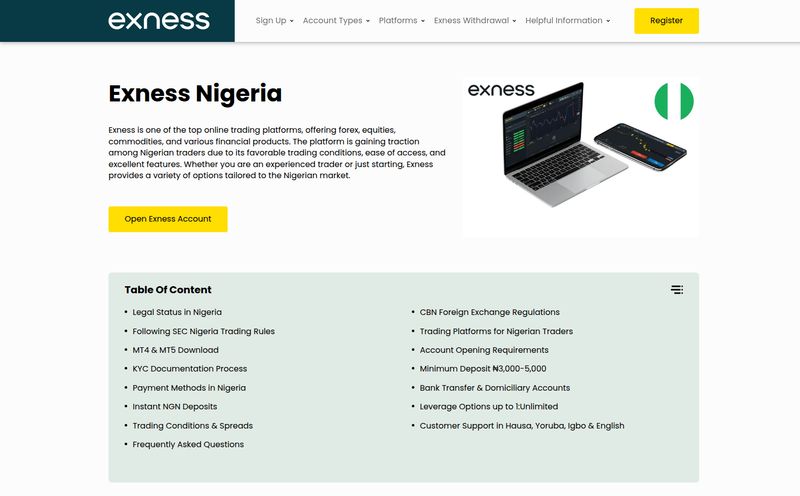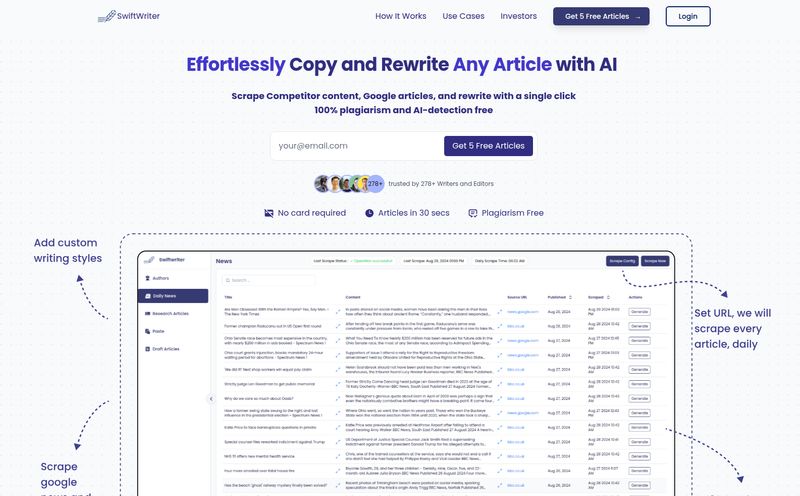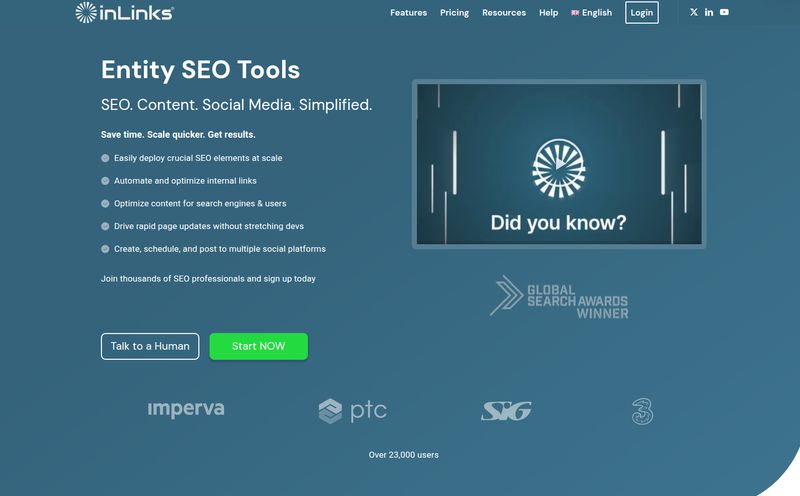Let’s have a little chat. Just you and me, fellow SEO pros and traffic-chasers. How many hours—be honest—have you sunk into the black hole of internal linking? I’ve been in this game for years, and I can tell you, I’ve spent more nights than I care to admit manually combing through hundreds of posts, trying to weave a coherent web of links. It's the kind of tedious work that makes you question your life choices. You know the drill: find a relevant anchor text, search for a suitable page to link to, open the editor, insert the link, save, and repeat. And repeat. And repeat.
It's the digital equivalent of untangling a massive ball of Christmas lights. Necessary, but oh-so-frustrating.
We do it because we know it’s crucial. Internal linking is like the central nervous system of your website. It guides users, spreads link equity (that sweet, sweet PageRank), and, most importantly, helps Google understand what your site is all about. A solid internal linking strategy is the backbone of topical authority. Without it, your content is just a collection of lonely islands. So, when I first heard about a tool called LinkBoss, which promised to automate this whole process with AI, my first thought was, “Yeah, right.” I’ve seen a lot of so-called “AI solutions” that are just glorified VLOOKUPs. But the buzz was real, with folks like Matt Zimmerman and Casey Keith giving it a nod. So, I had to see for myself.
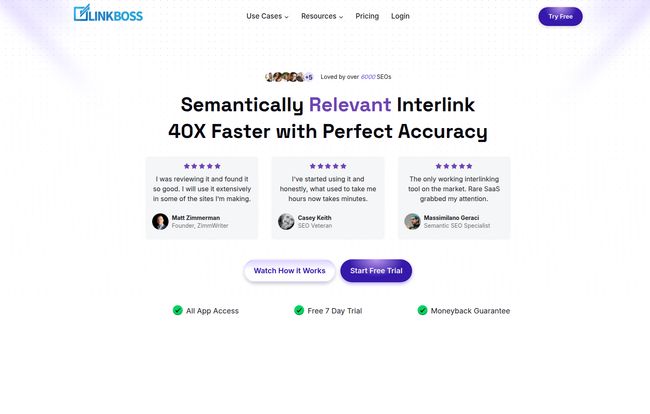
Visit LinkBoss
So, What Is LinkBoss Exactly?
At its core, LinkBoss is an AI-powered semantic internal linking tool. That’s a mouthful, I know. In plain English? It uses smart technology (think NLP and big data) to understand the meaning and context of your articles, not just the keywords you’ve stuffed in there. It then suggests and builds internal links for you, not just randomly, but in a way that creates powerful, logical topic clusters. The goal is to make your site structure so clear and authoritative that Google can’t help but reward you with better rankings.
This isn't just about saving time, though it claims to be 40x faster than doing it by hand. It's about doing it smarter. It’s about moving beyond simple keyword matching and building a semantically-rich site architecture. That's the kind of stuff that separates the sites that plateau from the ones that dominate the SERPs.
A Deep Dive into the LinkBoss Features
Alright, let's get into the nuts and bolts. A tool is only as good as its features, right? Here’s what stood out to me during my trial.
The Magic of Semantic and Bulk Interlinking
This is the main event. The ability to build hundreds of contextually relevant links with a few clicks. LinkBoss scans your content and identifies opportunities for internal links, suggesting both the target page and the anchor text. And from what I’ve seen, the suggestions are scarily accurate. It understands nuance. It won't just suggest linking “best dog food” to another article with that exact phrase; it might link it to a post about “canine nutrition” or “grain-free puppy diets.” That's true semantic relevance. The claim of doing a week's work in under an hour? It doesn't feel like an exaggeration.
Building Effortless Silo Structures
Ah, the silo structure. A term that sounds complex but is really just about organizing your content into neat categories to establish topical authority. Think of it as creating super-defined departments in your content library. LinkBoss automates this. The feature that really caught my eye is the Reverse Silo. Traditionally, you link from your main pillar page down to supporting articles. The Reverse Silo flips that, building authority from your detailed support pages up to your main pillar. It’s a clever way to pass authority upwards, and LinkBoss claims to be the first to innovate this. For anyone serious about building topical maps, this is huge.
One Dashboard to Rule Them All
If you're an agency owner or a portfolio blogger juggling multiple sites, this feature is a lifesaver. You can manage the interlinking for all your properties from a single, unified dashboard. No more logging in and out of a dozen different WordPress installs. You get a bird's-eye view of everything, which saves an incredible amount of time and mental energy. Its a small thing, but it’s a massive quality-of-life improvement.
No More Orphan Pages or Dead Ends
Orphan pages—those poor, forgotten articles with no internal links pointing to them—are SEO poison. LinkBoss has an Interlinking Report and a Site Visualizer that make finding these issues almost fun. The visualizer gives you a graphical map of your site's link structure. You can literally see the gaps. It’s like being an urban planner for your website, spotting where you need to build new roads. Fixing these gaps and dead-end pages (pages that don't link out to anything) is critical for both user experience and crawlability, and this tool makes it dead simple.
Let's Talk Money: The LinkBoss Pricing Structure
Okay, the all-important question: what's this going to cost me? LinkBoss has a pretty flexible, credit-based system. It can be a little confusing at first, but it boils down to two main types of plans: monthly/yearly subscriptions and annual credit packs. The links you build are permanent, which is a big plus.
Here’s a simplified breakdown of their subscription plans:
| Plan | Monthly Price (Billed Yearly) | Credits/Month | Sites |
|---|---|---|---|
| Starter | $8 /month | 200 | 3 |
| Growth | $36 /month | 1000 | 15 |
| Enterprise | $111 /month | 4000 | 50 |
They also offer yearly credit packs (Sprint, Elite, Ultimate) if you prefer to buy a large number of credits upfront without a recurring subscription. And for the skeptics among us (myself included), they offer a 7-day free trial and a 14-day money-back guarantee. It’s a pretty low-risk way to see if it works for you.
But Is It Perfect? A Few Caveats
No tool is a silver bullet, and LinkBoss is no exception. For all its power, there's one notable limitation: it's currently designed for websites with less than 25,000 posts. For 99% of us, that's more than enough. But if you're running a massive, enterprise-level publication, you'll need to check if you fit under that cap.
Also, the credit system might not be for everyone. While it promotes a “pay for what you use” model, some users just prefer a simple, unlimited monthly fee. It’s a matter of personal preference, but something to be aware of.
Frequently Asked Questions About LinkBoss
- How does the LinkBoss credit system work?
- It's pretty straightforward. Generally, generating a report or building a set number of links will consume credits. For instance, creating one internal link might cost one credit. The idea is you only pay for the actions you perform.
- Are the links I build with LinkBoss permanent?
- Yes! According to their pricing page, any interlinks you create with the tool stay on your site permanently, even if you cancel your subscription. This is a huge advantage over some other tools where your work disappears if you stop paying.
- Can I use LinkBoss on any website CMS, like Squarespace or Wix?
- LinkBoss is a web-based tool that works with most major content management systems, including WordPress. It's not a plugin, so it connects to your site from its own platform, offering more flexibility.
- What is a "Reverse Silo" and why does it matter?
- A reverse silo is an internal linking strategy where you link from smaller, supporting articles up to your main, foundational "pillar" page. This concentrates link equity and signals to Google that your pillar page is the most important authority on that topic. It's a powerful way to build topical relevance.
- Is there really a site size limit?
- Yes, as of now, the tool is optimized for sites with fewer than 25,000 posts. This covers the vast majority of blogs and business websites, but it's an important detail for very large publishers.
- Is LinkBoss difficult to set up?
- Not at all. Since it’s a web-based application, there’s no clunky plugin to install. You just connect your site via the dashboard, and it starts analyzing your content. The process is designed to be quick and user-friendly.
My Final Verdict on LinkBoss
So, is LinkBoss the magic wand I’ve been waiting for to solve all my internal linking woes? Well, maybe not a magic wand, but it's damn close to being a power tool in a world of hand screwdrivers. The time it saves is undeniable. But the real value, in my opinion, is the strategic edge it provides. It forces you to think about your site architecture in a more sophisticated way and gives you the means to execute that vision without spending weeks on manual labor.
It's for the agency owner trying to scale their SEO services. It's for the affiliate marketer building out niche sites. It's for any serious content creator who understands that great content is only half the battle—the other half is how you connect it. If you value your time and want to build a more powerful, authoritative website, then giving LinkBoss a spin is, frankly, a no-brainer. I wish I had this years ago.
